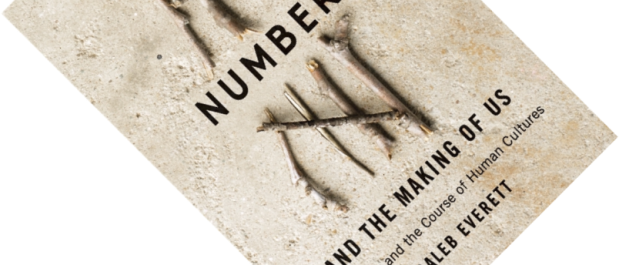What makes us human? Various authors have dished out various reasons in recently published books. From culture to cooking to creativity (see Fuentes’s The Creative Spark I reviewed previously). Caleb Everett, a professor of linguistic anthropology, here makes the point that the invention of numbers, which could be considered another instance of human creativity at work, has been an instrumental tool in allowing humans to transform the world. Without them, quantities exist, but we have only a vague awareness of them.

“Numbers and the Making of Us: Counting and the Course of Human Cultures”, written by Caleb Everett, published by Harvard University Press in March 2017 (hardback, 297 pages)
Numbers and the Making of Us brings together strands from the fields of anthropology, linguistics and psychology into a tidy package structured in three parts. The first part looks at the pervasiveness of numbers, starting with our perception of time (why 24 hours and 60 minutes? Ask the Ancient Egyptians, Babylonians and Sumerians). Everett then looks at the archaeological and written record which shows a long history of symbolic representation of quantities (including a very interesting look at how the Mayas counted – apparently to 20, using a duodecimal rather than decimal system). A short survey of counting in a variety of indigenous languages reveals a bias for using words for hands (in English we, for example, have a phrase such as “a handful”) and grouping in quantities of fives and tens, reflecting the number of fingers on each hand. Finally, Everett looks at other kinds of numeric language and shows there is more to some languages than a simplistic dichotomy in singular and plural, with some languages having several plural forms for specific quantities.
The second part looks at the cognitive side of things and surveys research on anumeric people (i.e. people who have no counting systems, such as the Pirahã, people indigenous to the Amazon rainforest on whom Caleb Everett and his parents have done anthropological research), prelinguistic children, and animals. This reveals a phylogenetically surprisingly conserved tendency: without numbers, all of these groups can only count to three. It seems the human brain has two number systems, one an exact number sense that can tell apart 1, 2, and 3; the other an approximate sense that can do fuzzy math and estimate quantities, as long as they differ sufficiently (roughly in a 1:2 ratio). Finally, the third part looks at how numbers and basic arithmetic were likely invented, how numbers transformed human subsistence (enabling progress in agriculture, architecture, and science), and the social and spiritual effects that numbers have had.
“It seems the human brain has two number systems, one an exact number sense […] the other an approximate sense that can do fuzzy math”
Everett delivers a neatly structured book, with each chapter having a summarising conclusion that leads to the next chapter. The first two parts, where he discusses linguistic, anthropological and cognitive findings, are in my opinion the best. But I was waiting for a payoff in the third part that never came and finished the book wanting more. I was left with all sorts of questions, such as “when did our Westen numerals first appear in the archaeological record?”, “when did larger numbers first make their appearance?”, “what about other numbers such as negative numbers, fractions or the number zero?”. Everett touches on these topics, but only ever so briefly. Perhaps it’s not fair to fault this book for not providing a comprehensive history of numbers. As witnessed by Stephen Chrisomalis’s book Numerical Notation: A Comparative History, which describes more than 100 such systems, this is a vast topic. So it’s an understandable decision to limit the scope of this book. Plus, Everett refers to other books that cover these questions – it looks like I should read Amir Aczel’s Finding Zero: A Mathematician’s Odyssey to Uncover the Origins of Numbers.
However, based on the book’s title, I was expecting a brief “big history” of how numbers transformed agriculture and would have liked a bit more “show, don’t tell”. Though it is reasonable to assume that numbers were instrumental in the development of agriculture, trade, and nation-states, Everett provides what feels like a brief summary only. I would have liked to see more details here. What were the key stages of progress enabled by numbers? What evidence do we have from the archaeological record? Chapter 2 mentions clay tokens used in record-keeping but doesn’t provide much detail, nor illustrations. Similarly, a gypsum tablet housed in the British Museum is mentioned as the oldest artefact we currently have showing true numerals, but again, it is not illustrated. This feels like a missed opportunity, especially as the book contains other nice photos of old artefacts, such as a reindeer antler with carved markings, which was possibly used as a calendar.
Even though I was left wanting more detail where the effect of numbers on the evolution of human societies was concerned, the other two parts provide a very satisfying read, with especially the linguistic and cognitive sections being Everett’s strong suit. His writing is accessible, mixing in personal reflections on anthropological fieldwork with a neatly structured narrative, and the book is compellingly readable.
Disclosure: The publisher provided a review copy of this book. The opinion expressed here is my own, however.

, paperback or ebook
Other recommended books mentioned in this review:



